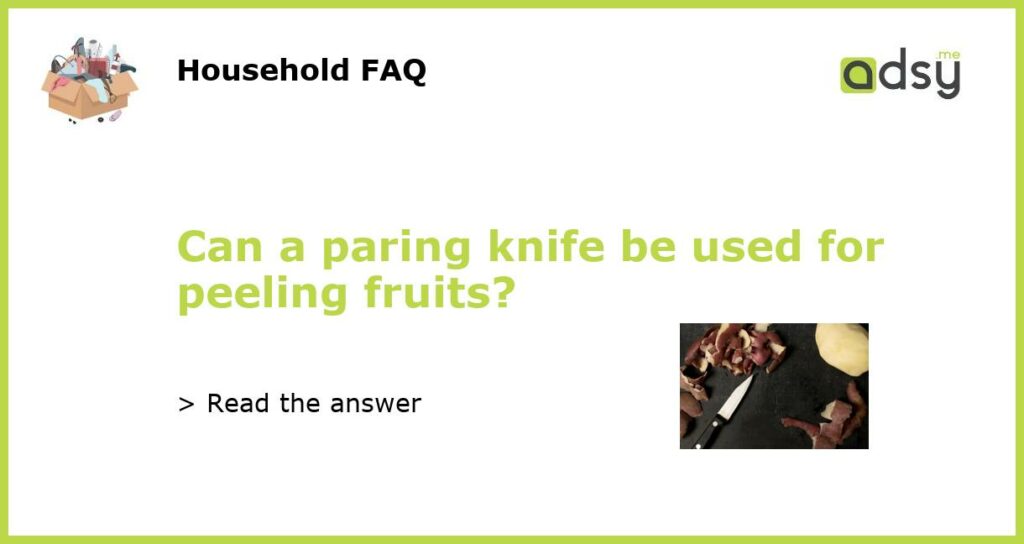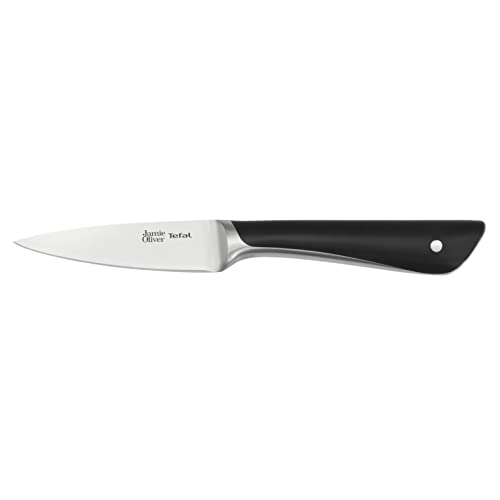Yes, a paring knife can be used for peeling fruits
If you’re looking to peel fruits, a paring knife can be a great tool to have in your kitchen. While there are specific fruit peelers available, a paring knife can effectively peel a variety of fruits, making it a versatile choice.
The benefits of using a paring knife for peeling fruits
1. Versatility: A paring knife can peel a wide range of fruits, from apples and pears to citrus fruits like oranges and lemons. Its small size and sharp blade make it easy to maneuver and remove the skins of different fruits.
2. Precision: The pointed tip of a paring knife allows for detailed and precise peeling. This is particularly useful when you need to remove the skin of certain fruits while preserving as much of the flesh as possible.
3. Control: The grip and control you have over a paring knife can make it easier to navigate the contours of different fruits. This can be especially beneficial when peeling fruits with irregular or bumpy surfaces.
4. Multipurpose use: Paring knives are not limited to just peeling fruits. They can also be used for various other kitchen tasks, such as slicing, coring, and removing seeds. This versatility makes it a valuable tool to have in your kitchen.
5. Cost-effective: Investing in a good-quality paring knife can be more cost-effective than buying specialized fruit peelers. A paring knife can serve multiple purposes, saving you money in the long run.
Tips for using a paring knife to peel fruits
1. Choose the right knife: Opt for a paring knife with a sharp and narrow blade. This will allow for better control and precision when peeling fruits.
2. Hold the fruit securely: Make sure the fruit is stable and won’t roll around while you’re peeling it. This will help prevent accidents and ensure smooth peeling.
3. Start at the top: Begin peeling from the stem end of the fruit and work your way down. This way, you can control the depth of the peel and avoid removing too much flesh.
4. Use short strokes: Instead of trying to peel the entire fruit in one go, use short and controlled strokes. This will give you more control and prevent the knife from slipping.
5. Practice safety: Always exercise caution when using a paring knife. Keep your fingers away from the blade and work slowly to avoid any accidents or injuries.
When to consider using a specialized fruit peeler
While a paring knife can handle most fruit peeling tasks, there are certain situations where a specialized fruit peeler may be preferable:
1. Removing tough skins: If you’re dealing with fruits that have thick or tough skins, such as pineapples or melons, a specialized peeler may make the task easier.
2. Efficiency: If you frequently peel large quantities of fruits, a dedicated fruit peeler with a comfortable grip may be more efficient and time-saving.
3. Specific fruit shapes: Some fruits, like kiwis or mangoes, have unique shapes that may require a specialized peeler to navigate their contours effectively.
4. Personal preference: Ultimately, the choice between a paring knife and a specialized fruit peeler comes down to personal preference. If you find that a particular tool makes peeling fruits easier and more enjoyable for you, go ahead and use it.
In conclusion
A paring knife can indeed be used for peeling fruits. Its versatility, precision, and control make it a practical choice for a wide range of fruits. However, in certain situations or for specific fruit shapes, a specialized fruit peeler may offer added benefits. Ultimately, the choice between using a paring knife or a fruit peeler comes down to personal preference and the specific needs of the task at hand.






